Forget dumbbells - this 5-move resistance band leg workout can help you get stronger in minutes
Resistance bands are cheaper to buy, easy to store, and just as effective for a leg workout. Here, a PT reveals the exercises to do for results
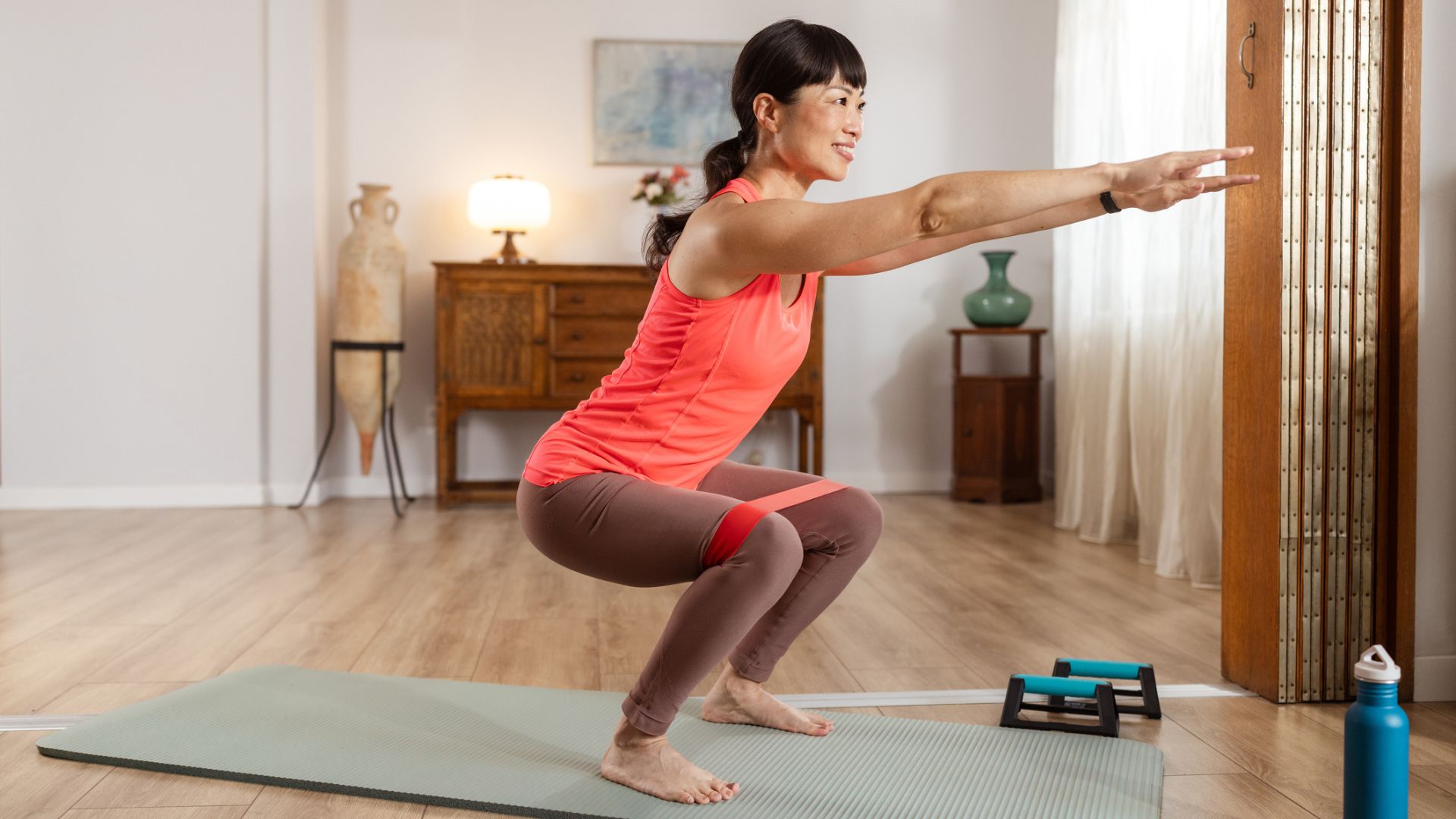

There's no need to spend hours working out to strengthen your lower body. As long as you stay consistent, a simple resistance band leg workout can help you get the job done in the gym, at home, or even on holiday.
The best resistance bands for leg workouts are thick and short, made from a durable combination of polyester and latex. They wrap around the leg just above the knee during resistance band exercises and are used for training the quadriceps (thighs), hamstrings (back of thighs), hip flexors, calves, glutes (buttocks), and all the smaller muscles surrounding them.
Resistance bands are a favourite of personal trainers like Tamsin White, a certified Level 3 Personal Trainer and women's fitness specialist, for good reason. While dumbbells and kettlebells are resistricted to one weight, you can customise the bands to make an exercise easier or harder. "They work really well for increasing resistance (so making you work harder) to bodyweight exercises including squats, glute bridges, donkey kicks or leg extensions, and hip abductions," she says. Ready to try these strength training exercsies for yourself? Start with three sets of eight to 12 repetitions of each exercise.
Resistance band leg workout
1. Glute bridges
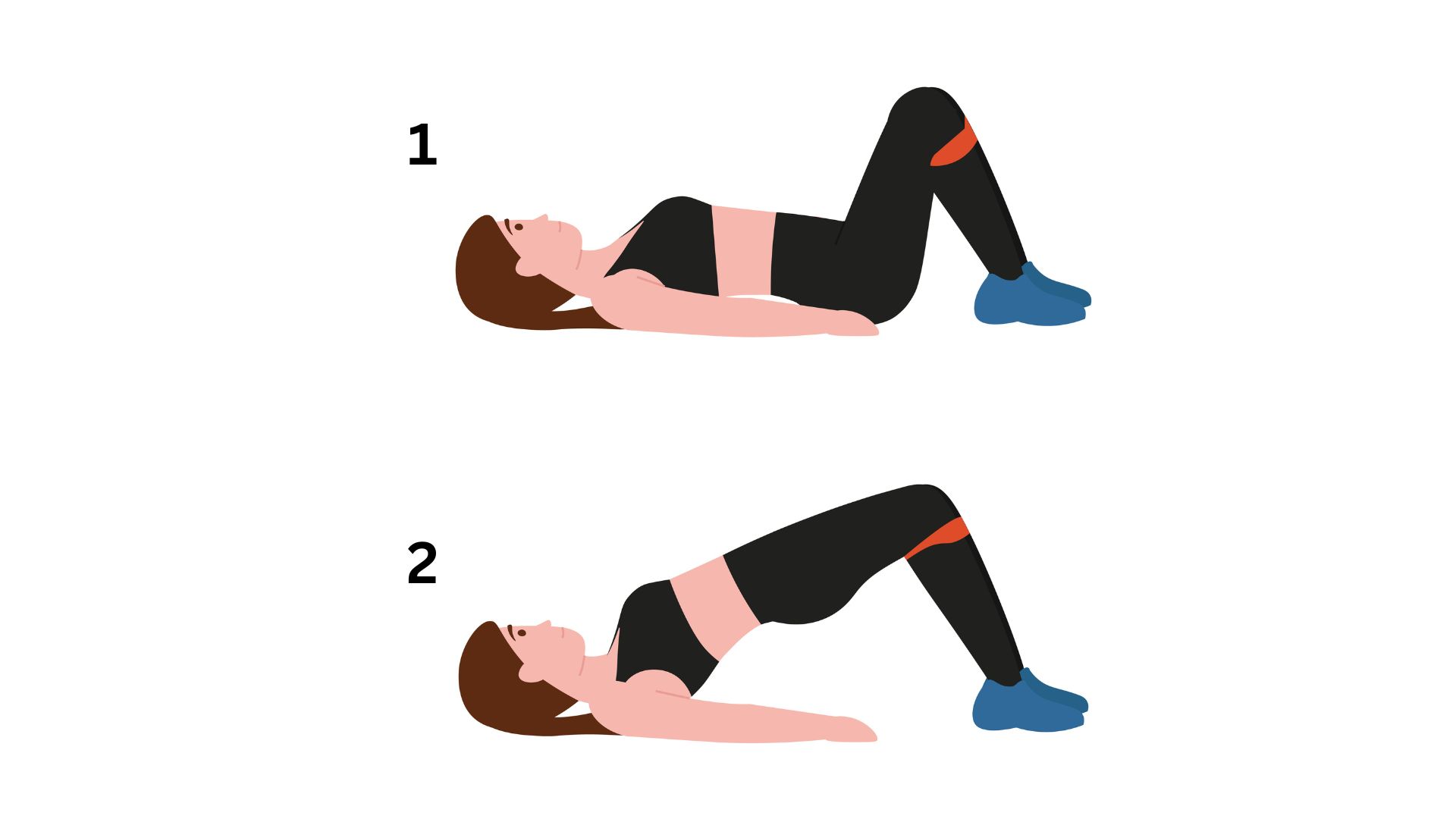
Targets: Glutes, hamstrings, core
Glute bridges are one of the best parts of this resistance band leg workout as they target multiple muscles at once in what's known as a 'compound' exercise. "This is great for improving muscle tone in the glutes and hamstrings, and it improves lower back and core strength," says White.
- Place the resistance band so it's around your thighs.
- Lie flat on your back with knees bent hip-width apart, and feet flat on the floor.
- Engage the core by pulling the belly button into the spine and squeezing the glutes, then lift your glutes off the floor, pressing through the heels of your feet and push your hips up until your shoulders, hips, and knees make a straight line.
- Pause and slowly lower your hips back to starting position, making sure to keep the spine neutral throughout.
You might not think it - but a glute bridge can be one of the best core exercises to do at home too, as the exercise engages muscles deep in the abs as you try to keep your pelvis and spine stable.
2. Banded squats
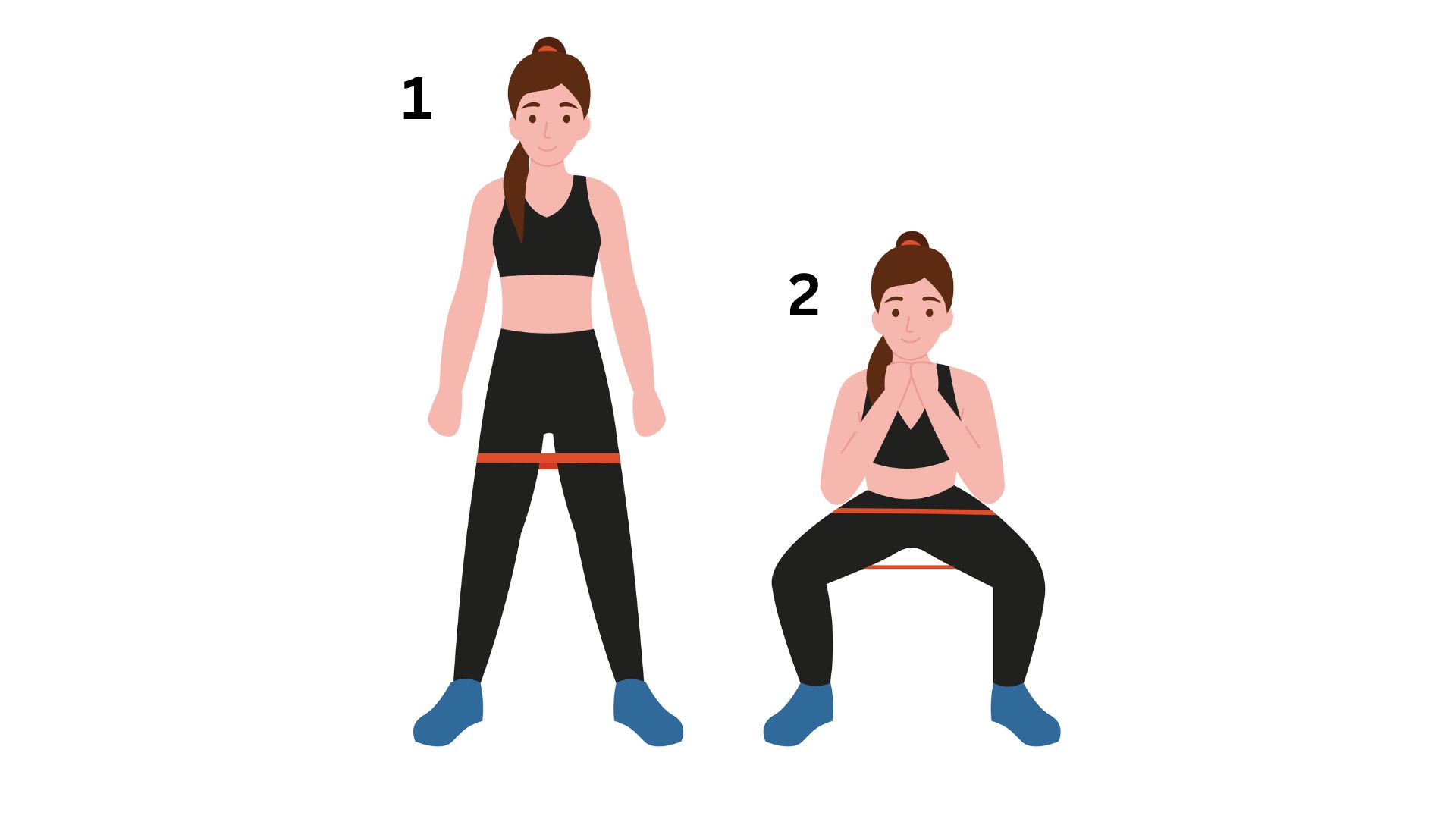
Targets: Quadriceps, glutes, hamstrings, adductors (inner thigh), hip flexors (small muscles at the front of your hips), and calves
Sign up to our free daily email for the latest royal and entertainment news, interesting opinion, expert advice on styling and beauty trends, and no-nonsense guides to the health and wellness questions you want answered.
You can't go wrong with learning how to do a squat correctly with a resistance band. While there are many different types of squat, the traditional exercise using a resistance band as described by White here always works lower-body muscles, as well as the core. "They are a fantastic compound movement for legs and glutes. This exercise also helps to increase tension throughout the movement," says the PT.
Here's how to do a banded squat:
- Feet hip width apart or slightly wider. Resistance band over just above the knees.
- Think about pushing your knees against the band as you squat - this helps maintain good form and stops your knees from rolling in.
- Imagine you’re sitting down into a low chair behind you - this is a good cue to push your hips back before bending your knees.
- Pause 3 to 4 times before reaching the bottom of your squat, contracting glutes throughout.
3. Banded lunges
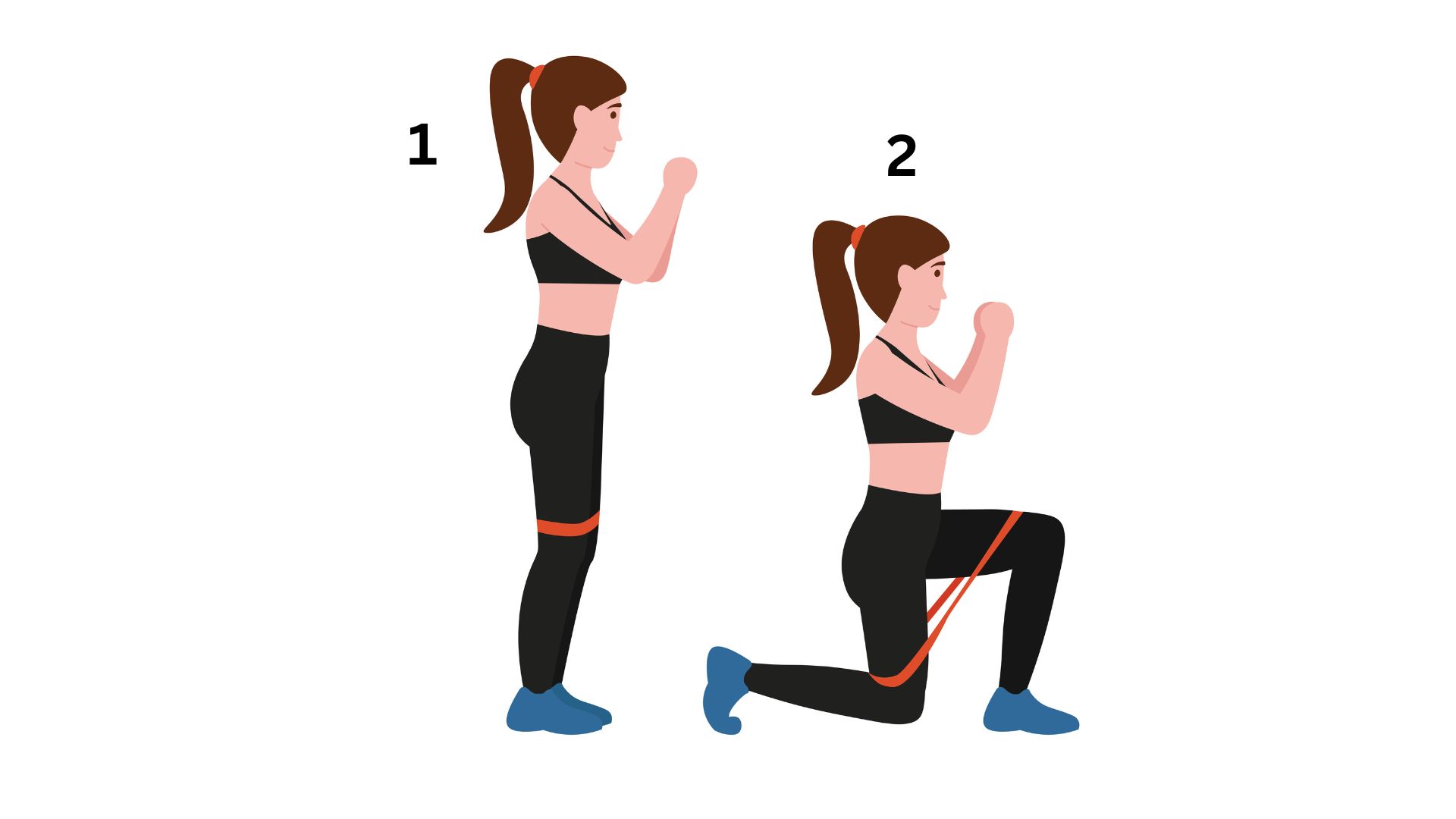
Targets: Quadriceps, hamstrings, glutes, calves, and core muscles
Much like squats, lunges target multiple muscles at once, making them compound movements. However, as you focus on one leg at a time, they are great for building single-leg strength. It's why they're key in strength training for runners routines.
Focusing on one leg at a time also forces your core and the surrounding stabilising muscles to engage, which can help improve your balance and stability.
- Stand with your feet hip-width apart.
- Fold the resistance band in half and step through the middle so you have one foot in the centre, keeping the band on the floor. Hold onto each looped end of the resistance band. If you have a strong resistance band, just loop it under your foot (as pictured above).
- Engage your core and retract your shoulders.
- Step back with the opposite foot to the one in the resistance band.
- Lower your back knee towards the ground slowly, keeping your weight distributed evenly between your toes on the back foot and heel of the front foot.
- Hold your back knee of the ground for a count of two, then drive through your front heel and return to a standing position.
- Complete your repetitions on one leg, then switch.
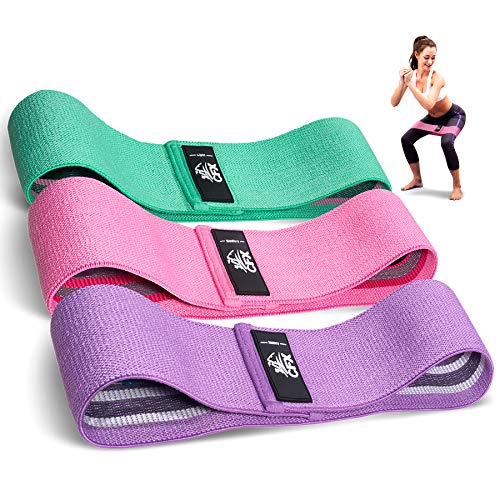
A thick pair of polyester and latex bands, with options for light, medium, and heavy resistance, are ideal for a resistance band leg workout.
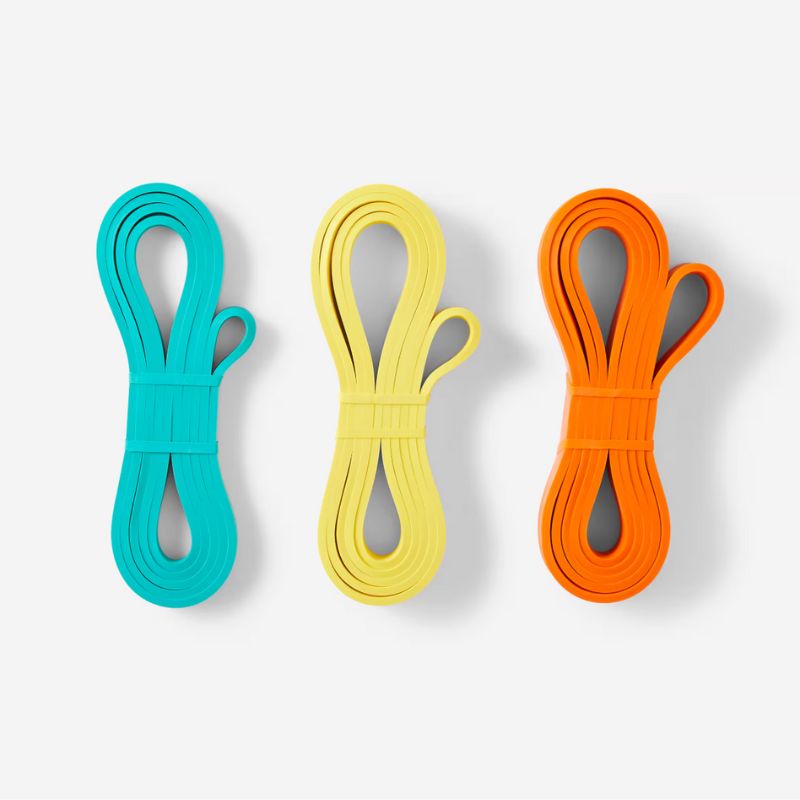
For exercises like lunges, you'll need a longer, thinner band that stretches up to at least chest height and can loop under your foot.

Resistance bands for lower-body workouts sometimes come with handles too, which can make exercises like squats and lunges easier.
4. Banded Hip Abduction
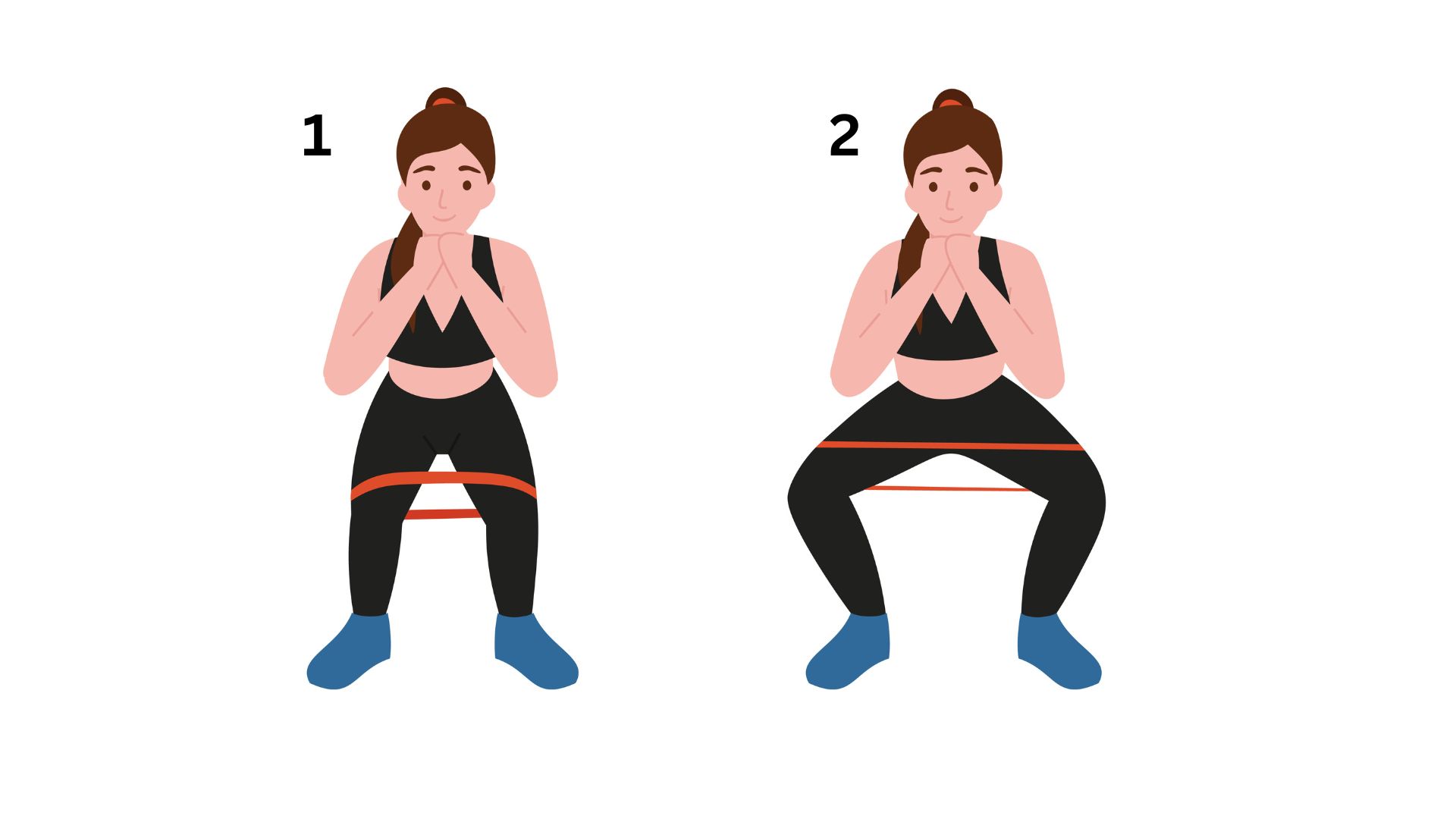
Targets: Glutes and smaller muscles in the upper thigh
This exercise is key to "strengthen your hips, improve balance and core strength", says White.
- Place the resistance band around your thighs with your feet hip width apart.
- Get into a squat position or sit down on a chair.
- Push knees apart as far as they can go, pause for a second or two and then return back to starting position.
- Try and keep the soles of your feet flat on the ground throughout.
You might think that a resistance band leg exercise would only concentrate on the legs, but the glutes and smaller muscles are essential for stabilising the hips and larger leg muscles like the quadriceps and hamstrings. In turn, this can help reduce injury risk to the lower back, knees, and ankles.
5. Banded standing crab walks
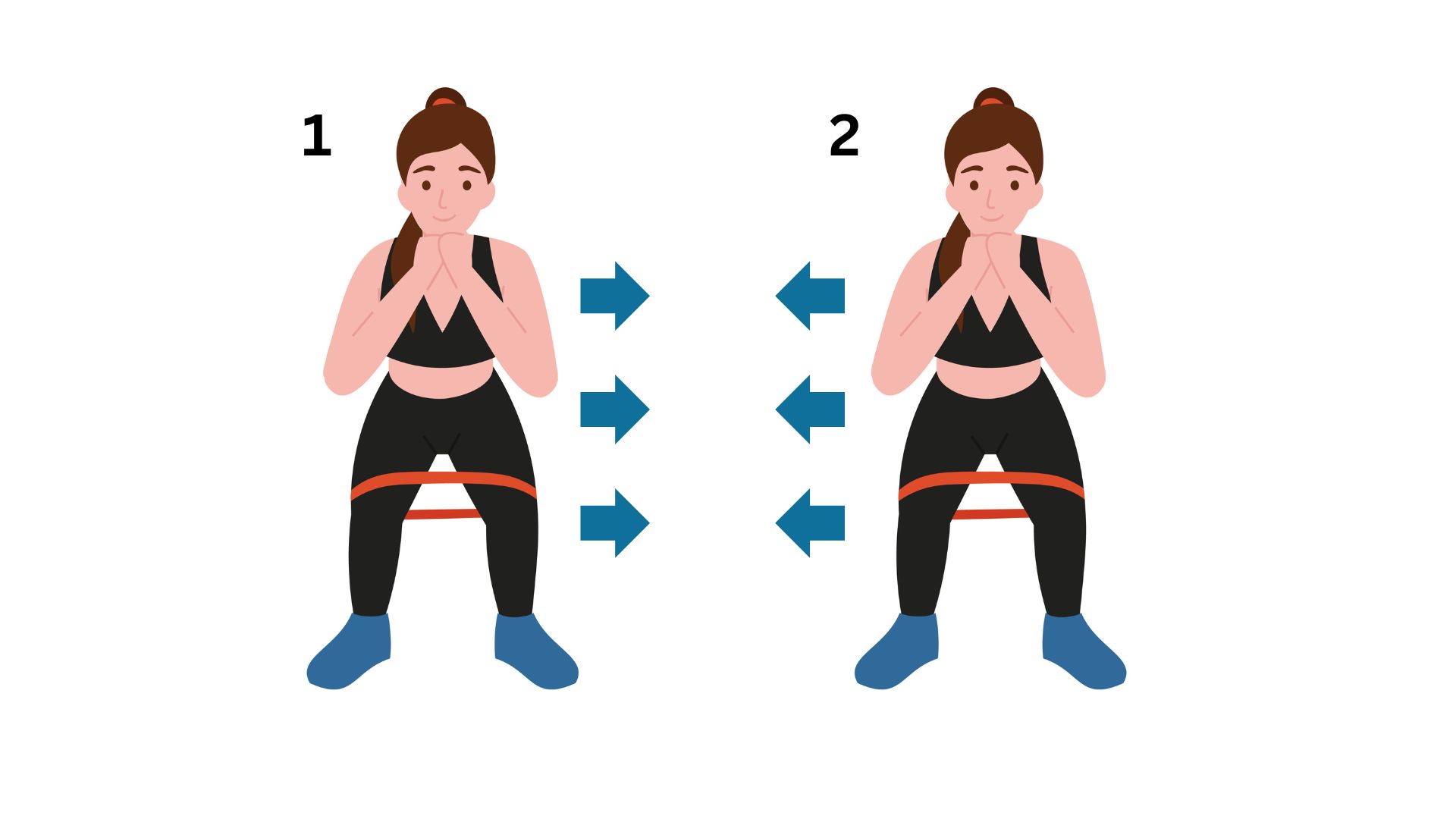
Targets: Quadriceps, hamstrings, glutes, core
This is another "great functional movement that helps improve glute and hip strength, as well as balance and posture," says White.
- Put the resistance band around your thighs, just above the knee. If you find this too difficult, have the band around your ankles.
- Come down into a squat position and side step.
- Be sure to stay low and maintain the squat while stepping out sideways in a continuous movement.
- Continue in each direction for 4 to 5 steps before walking back to the other direction.
Benefits of a resistance band leg workout
- More affordable than weights: "Resistance bands are more affordable than weights making them more accessible for anyone looking to improve their strength and/or mobility," says PT Tamsin White.
- Lots of choice: You'll find resistance bands for varying strength levels, from as little as 2kg to as much as 34kg and beyond, so whether you're doing strength training at home for beginners or you've been lifting for years, you'll find a band to suit your level.
- Versatile: Once you've done your leg workout, you can use the same set of resistance bands to do an upper-body workout targeting the chest, back, arms, shoulders, and chest. However, White warns they can be "more limiting" for some exercises, such as bicep curls.
- Low-impact: "If you’re new to exercising and looking for ways to tone your lower body they also offer a low impact alternative to running and other aerobic exercises," says White.
- Improve flexibility: A study in the PLOS One Journal found that resistance training with bands can "improve upper and lower limb flexibility", along with endurance, strength, balance, and has mental health benefits. It's why some people use resistance bands in Pilates for strength training.
- Help consistency: You might find you take your resistance band leg workout away with you, stopping you from breaking your routine. The bands are "super versatile and a great piece of kit for taking away on trips, being super light and taking up very little space", says the PT.
- Great for beginners: "Due to their shape, the weight distribution tends to be more even as opposed to kettlebells, so they may be more suitable for beginners or people who have joint issues like weaker wrists," she says.
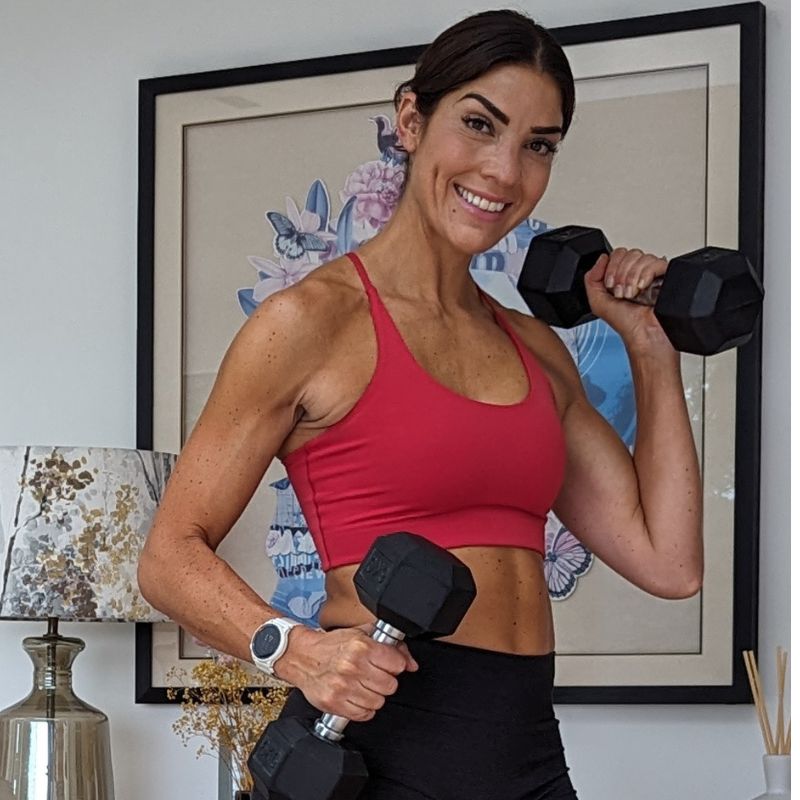
Tamsin White is a Level 3 Qualified Personal Trainer, pre- and post-natal and menopause specialist. She also founded Empower Fitness. Tamsin is passionate about helping women of all ages discover the incredible power of strength training. She's seen firsthand how transformative lifting weights can be after experiencing the challenges of early menopause at 42. Strength training became a game-changer for her.
Can I build muscle with resistance bands?
Yes, you can build muscle with resistance bands. A study published in the SAGE Open Medical Journal, led by Federal University of Mato Grosso, found that elastic resistance can produce similar results to "conventional" strength training, like you would do at the gym.
What's more, other studies have shown that the results are similar in both healthy adults and high-performance athletes, so regardless of your strength level, you can benefit from using resistance bands.

Grace Walsh is woman&home's Health Channel Editor, working across the areas of fitness, nutrition, sleep, mental health, relationships, and sex. She is also a qualified fitness instructor. In 2025, she will be taking on her third marathon in Brighton, completing her first ultra marathon, and qualifying as a certified personal trainer and nutrition coach.
A digital journalist with over seven years experience as a writer and editor for UK publications, Grace has covered (almost) everything in the world of health and wellbeing with bylines in Cosmopolitan, Red, The i Paper, GoodtoKnow, and more.